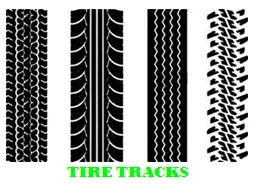PPT-The tracking data in Ocean Tracks have been a powerful tool for scientists, revealing
Author : giovanna-bartolotta | Published Date : 2018-03-18
Fact or Artifact Interpreting Patterns in Ocean Tracks Data L earning O bjectives Recognize how animal movement is represented in the Ocean Tracks interface Decode
Presentation Embed Code
Download Presentation
Download Presentation The PPT/PDF document "The tracking data in Ocean Tracks have b..." is the property of its rightful owner. Permission is granted to download and print the materials on this website for personal, non-commercial use only, and to display it on your personal computer provided you do not modify the materials and that you retain all copyright notices contained in the materials. By downloading content from our website, you accept the terms of this agreement.
The tracking data in Ocean Tracks have been a powerful tool for scientists, revealing: Transcript
Download Rules Of Document
"The tracking data in Ocean Tracks have been a powerful tool for scientists, revealing"The content belongs to its owner. You may download and print it for personal use, without modification, and keep all copyright notices. By downloading, you agree to these terms.
Related Documents









